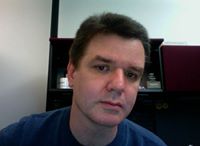Where is a perfect vacuum—one that is absolutely without any matter or energy—possible?
A vacuum is any space that has no matter in it. To date (11/18/17), no laboratory has reported achieving a perfect vacuum. Interstellar space, out between the stars, is where the closest thing to a perfect vacuum can be found. However, on average, there are still a few hydrogen atoms in every cubic meter of “empty” space. Further, dark energy, neutrinos, gamma rays, cosmic rays, and random “fluctuations” prevent a perfect vacuum at the level of quantum physics.
For everyday purposes, a vacuum is just an area where gas pressure—the gas usually being air—is lower than atmospheric pressure. For example, a household vacuum cleaner in good working order produces an area with pressure that is about 20% lower than the surrounding air. This suction makes the machine work.
The amount of air-pressure reduction is called the vacuum’s “quality.” Vacuum chambers used in industry and research can create a vacuum with about 100 particles of gas in a cubic centimeter. This "ultra-high quality” vacuum operates at about one trillionth of atmospheric pressure.
NASA’s Space Power Facility—formally called the Space Power Facility at NASA Glenn Research Center at Plumb Brook Station—in Sandusky, Ohio, now has the largest vacuum chamber in the world, 100 feet in diameter and 122 feet high. Most vacuum chambers are much smaller. The Kurchatov Institute is a National research center.
More Info:
en.wikipedia.org















